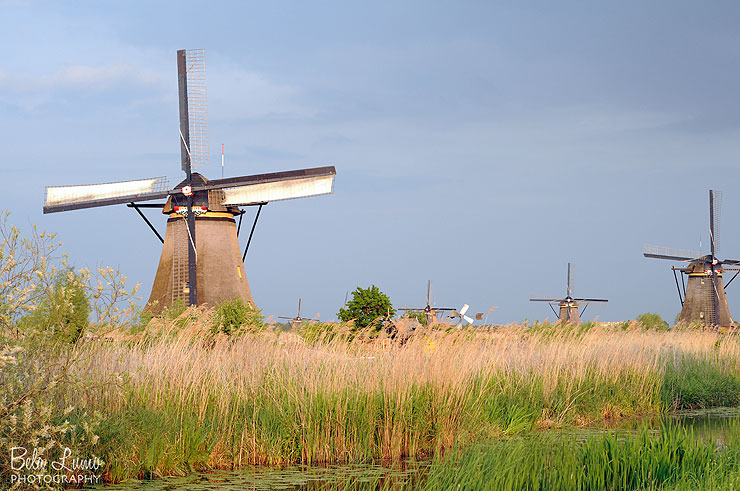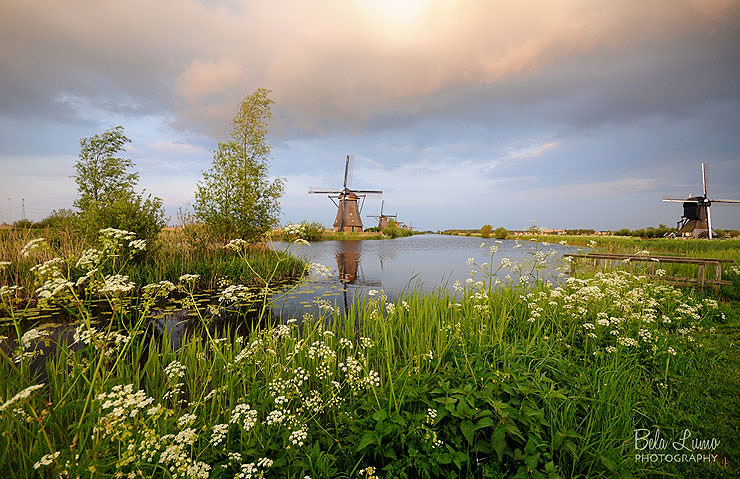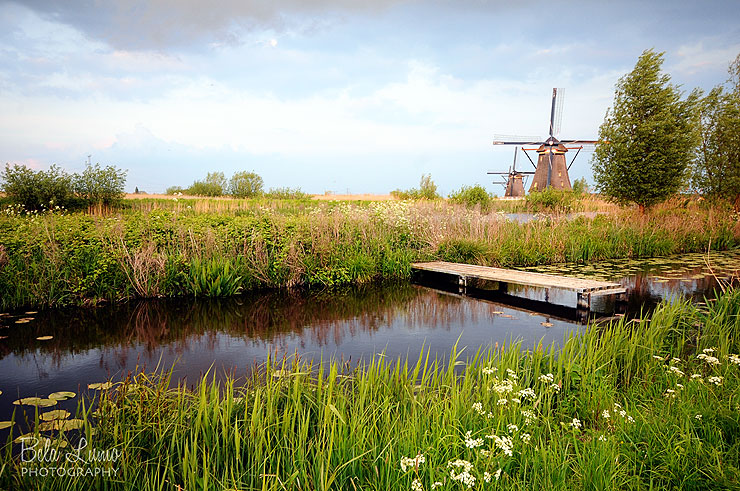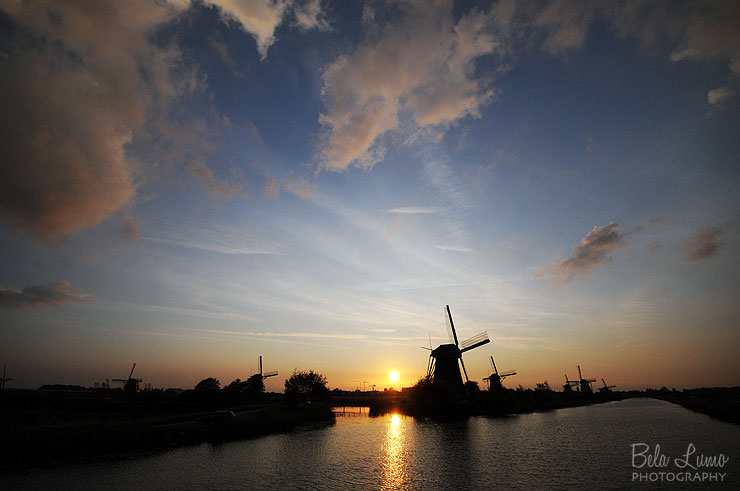The Windmills of Kinderdijk
I’m a little windmill crazy, so no trip to The Netherlands is complete without at least one photo to satisfy my obsession. It’s pretty difficult to come away with only one photo though. They are just so visually stunning, especially when grouped together like at Kinderdijk. We hadn’t planned on stopping there this trip since we’d already visited 4 or 5 times, but we just happened to be passing by on our way home and (I) couldn’t resist. I’d been kicking myself for missing a photo opportunity the last time we were there, and wanted to see if I could redeem myself. I feel much better because it turns out that the incredible sunset I thought I’d missed isn’t really visible enough from the windmill area. I would still highly recommend a walk through there at this time of day though.
The 19 windmills of Kinderdijk form the largest collection of historical, working windmills in The Netherlands and are registered as a UNESCO heritage site since 1997. They were built in the first half of the 18th century as a defense against rising water levels in the polders. Flooding had been a constant concern for the Dutch due to the extremely low elevation of much of the countryside, and the mills allowed water to be lifted out of the low-lying land into drainage pools. This iconic symbol of Dutch culture continued to be an important aspect of water management in the polders until the late 19th century when steam-driven pumping stations made them redundant.
Since the windmill area is integrated into the village, there is no entrance fee. Visitors can walk or bike down the canal path, which is especially nice at the end of the day when the tourist buses have left. Bikes are available for rent, or you can bring your own. The visitor’s windmill is open during the day, year round, so you can see what the inside of an 18th century mill looks like. There are also many other ways to tour the area. The windmills are no longer used to regulate the water level in the polder, but each Saturday in July and August the mills can be seen turning.






why thank you 🙂
Dreamy. They look like paintings.
Pingback: Tweets that mention The Windmills of Kinderdijk « Bela Lumo Photography -- Topsy.com